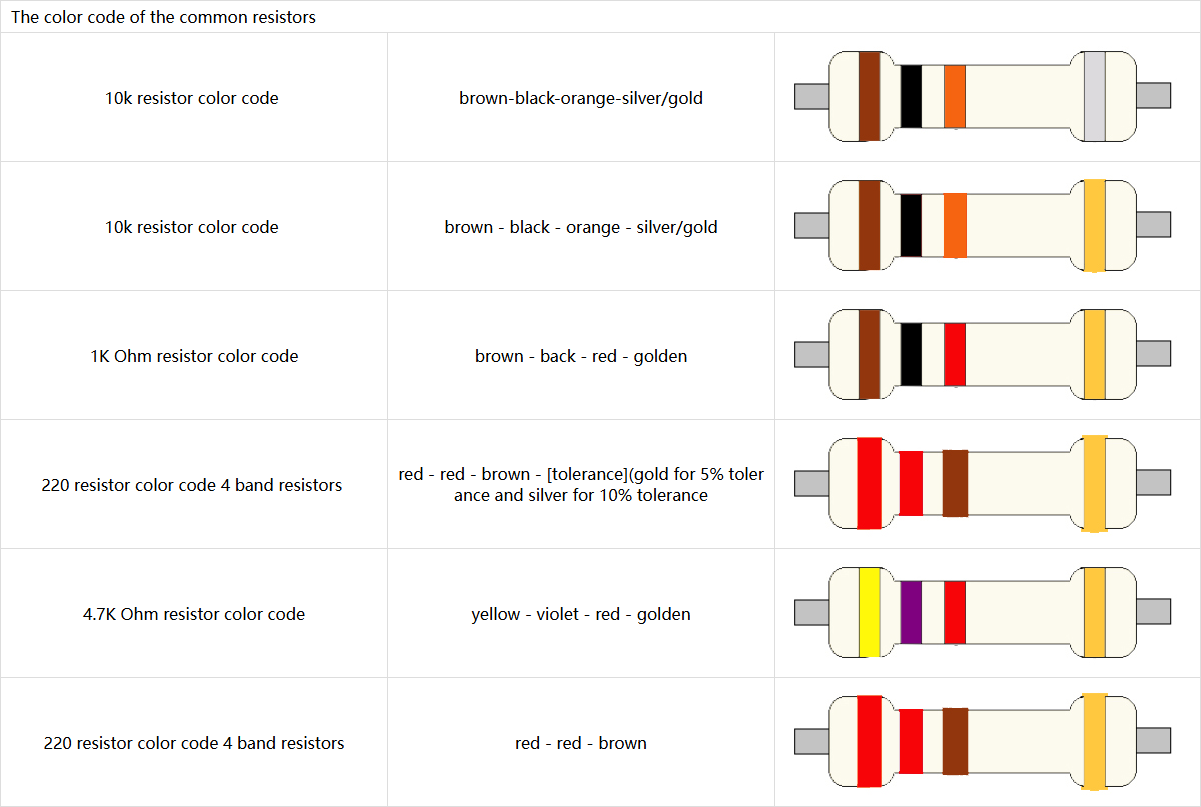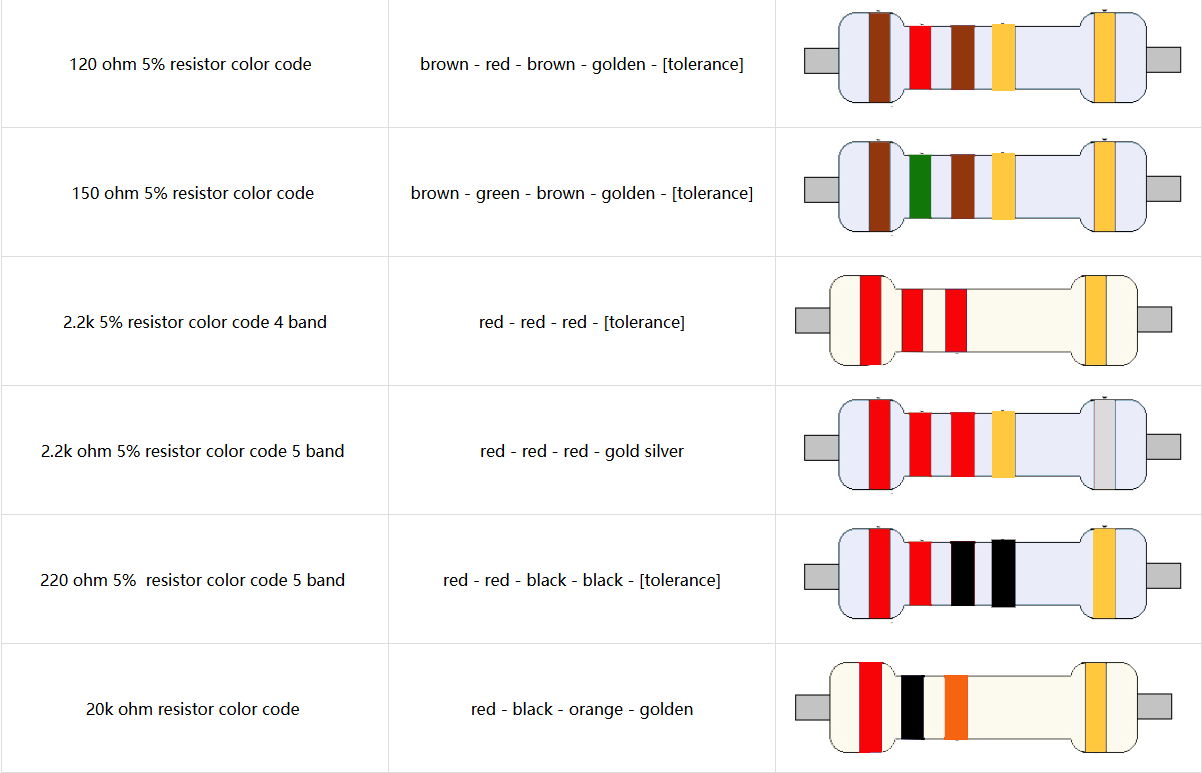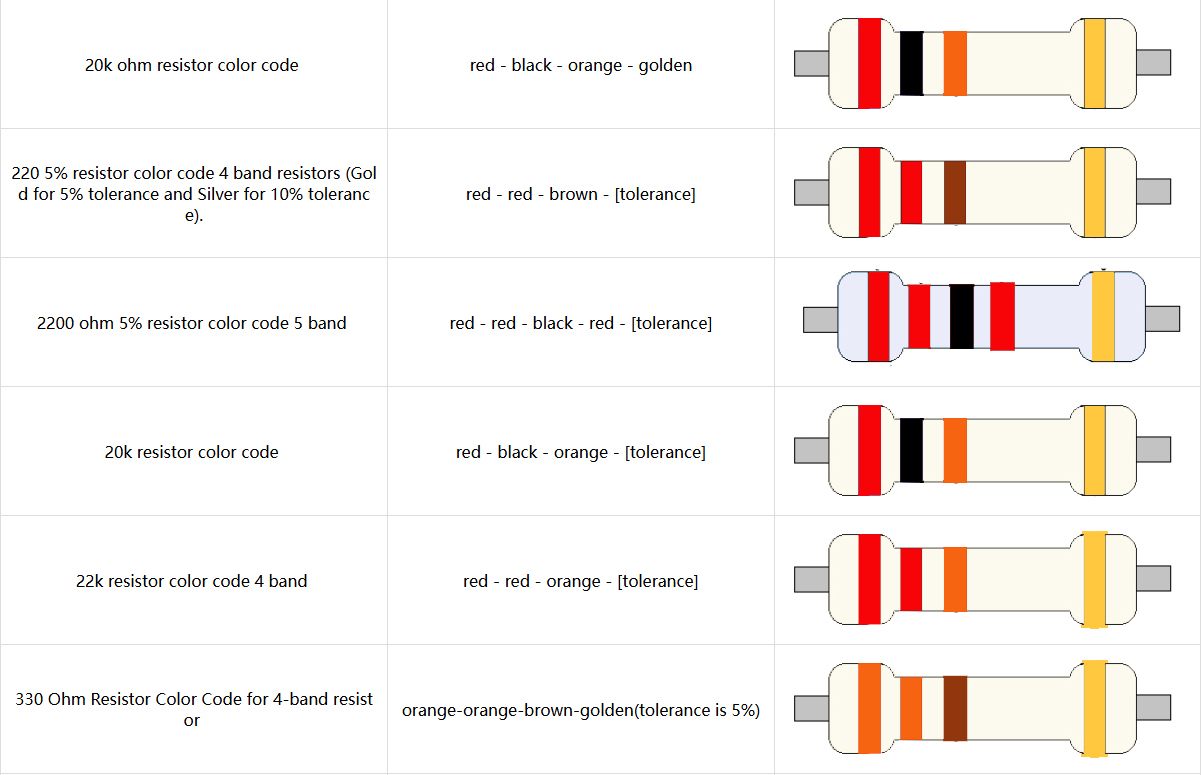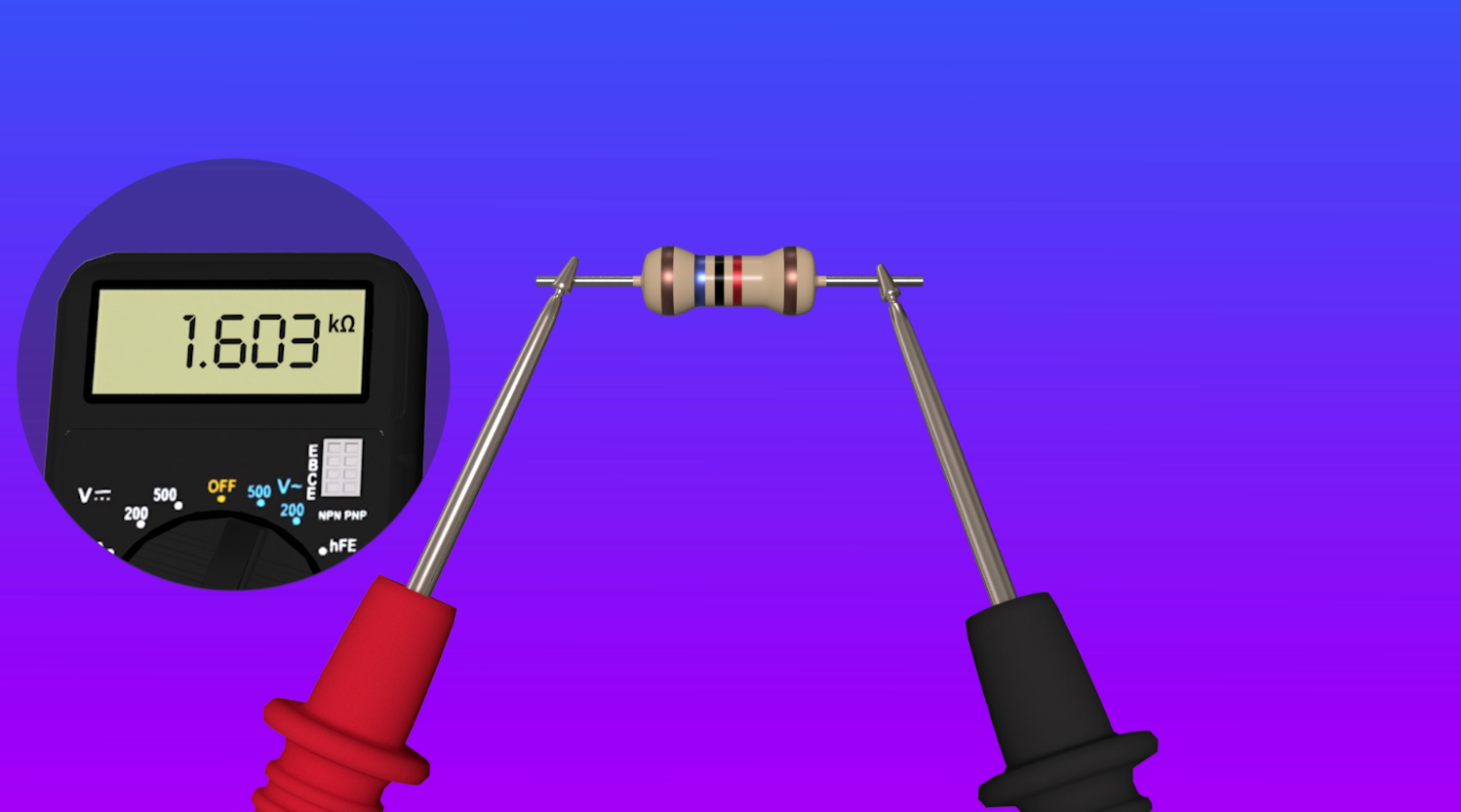-Original content, please do not reprint.
What is resistance
Resistance is an electronic component that hinders the flow of current, defined by Ohm's Law. It mainly serves to impede the flow of current through a conductor, hence it is called resistance. Resistance is typically represented by R as a physical quantity in physics, indicating the magnitude of the conductor's hindrance to current flow. The greater the resistance of the conductor, the more significant its hindrance to current flow. Different conductors generally have different resistances. From another perspective, resistance is actually an electronic component that converts electrical energy into internal energy and releases it

How resistance works
To understand the working principle of resistance, one must first understand Ohm's Law, which states that in the same circuit, the current flowing through a certain section of conductive material is directly proportional to the voltage across that section and inversely proportional to the resistance of that section. Conductivity is an important physical property of metallic materials, and resistivity is a crucial parameter for measuring this conductivity. The smaller the resistivity, the better the electrical performance of the conductor. Additionally, it plays a protective role in circuits; excessive current can damage our circuits. To make it easier to understand, let's take an example: consider an LED light, which has a thin metal wire inside. When we apply excessive current to it, this thin wire will be burned out. At this point, we can use a resistor to reduce the electron flow. The resistor can remove excess energy in our circuit, thereby regulating the appropriate current for the LED light, ensuring its normal operation without being damaged, thus protecting our LED light. The main working principle is that resistance makes it harder for current to flow, increasing the resistance of the current, and converting excess current into heat energy for dissipation. Typically, we need to know that the ease with which electrons pass through a material can be measured by its resistance value.
Parameters of resistance
The main parameters of resistance include resistance value, power, rating, temperature coefficient, tolerance, noise, frequency characteristics, volume and packaging, etc.
First, the resistance value is the most basic parameter of resistance, which represents the ability of resistance to hinder current. Its unit is ohm R. Its calculation formula is R = V/I, where R is the resistance value, V is the voltage, and I is the current
Second, power rating. The power rating refers to the maximum power that an electronic device can withstand, typically measured in watts (W). Power can also be calculated using the following formula: P = V × I = I^² × R = V^² / R where P is power, V is voltage, I is current, and R is the resistance value.
Third, the resistance value of a temperature coefficient changes with temperature. Here we use a temperature coefficient for calculation, with units of ppm/°C (parts per million per degree Celsius). For example, if the temperature coefficient is 50 ppm/°C, when the temperature changes by 1 °C, the resistance value changes to:R = R × 50 /1000000
Fourth, there is a permissible deviation between the actual value of tolerance resistance and the standard value. We call it tolerance. Common tolerances include ±1%, ±5%, ±10%, etc.
Fifth, noise. When the current passes through, when the resistance is passing through the current, some random fluctuations will be generated, and then some noise will be generated.
Sixth, frequency characteristics. When the resistance is at different frequencies, there will be some impedance changes, which we call frequency characteristics.
Seventh, volume and packaging. Here it refers to the volume and packaging of the resistor as its external characteristics, which are applied to different circuits in different ways.
Types of resista
Due to the different materials affecting the performance of resistance, a variety of resistors have been developed. There are many types of resistors, commonly seen are carbon film resistors, metal film resistors, surface mount resistors, cylindrical surface mount resistors, resistor arrays, photoresistors, varistors, ceramic resistors, power resistors, and wire-wound ceramic resistors. It is necessary to select suitable resistor components based on different application scenarios and the characteristics of different resistor materials.
The process of resistance
Due to the different materials of resistors, the processes required for them are all different. So today we will only talk about one of the most commonly used color-coded straight-through resistors, which is an axial lead process. This type of resistor usually has a circular shape with two external electrodes that are axially oriented at both ends of the cylinder. If classified by material and process, it can be divided into wound resistors. The process image of wound resistors is as follows: wound resistors(resistance?) involve winding nickel-chromium alloy wires on an alumina ceramic substrate, controlling the resistance value by adjusting the number of turns.
The winding resistance is highly accurate, and the tolerance can be achieved at 0.005%.
The low temperature coefficient of winding resistance is mainly due to nickel-chromium alloy material.
The winding resistance and parasitic inductance are large, as you can see from the winding method, so it cannot be used in high frequency scenarios.
Winding resistance can be made into high power resistors.
Standard resistance value
The resistance standard is developed by the IEC (International Electrotechnical Commission) and the standard document is IEC60063 and EN60115-2.
1.Common resistance series and their applications:
E6 series : Suitable for ±20% accuracy requirements.
E12 series : Suitable for ±10% accuracy requirements.
E24 series : Suitable for ±5% accuracy requirements, it is one of the most commonly used series.
E48 series : Suitable for ±2% accuracy requirements.
E96 series : Suitable for ±1% accuracy requirements, often used in applications requiring high precision.
E192 series : Suitable for ±0.5% accuracy requirements, usually used in laboratories and precision measuring equipment.
2.Nominal resistance range
100, 101, 102, 104, 105, 106, 107, 110, 113, 114, 115, 117, 118, 120, 121, 123, 124, 126, 127, 129, 130, 132, 133, 135, 137, 138, 140, 142, 143, 145, 147, 149, 150, 152, 154, 156, 158, 160, 162, 164, 165, 167, 169, 172, 174, 176, 178, 180, 182, 184, 187, 189, 191, 193, 196, 1982。
Characteristics of resistance
Resistors have the following characteristics:
1: Impedance characteristics: It refers to the effect of resistance on current, which is mainly defined according to Ohm's law.
2: Characteristics of heat. When current passes through a resistor, it generates some heat, and this heat is exactly what the resistor needs to help the circuit expel excess electrical energy.
3: Energy consumption control, the existence of resistance can control the current, by controlling the size of the resistance, the energy in the circuit can be controlled. By limiting the size of the current to achieve the purpose of saving energy.
4: The function of voltage stabilization can be achieved by maintaining the stability of the output voltage through the voltage drop across a resistor. It is possible to adjust the current and voltage in the circuit by simply changing the size of the resistor.
5: Current limit. In order to prevent the circuit components from being overloaded and burned, the current can be limited by using resistance to protect.
6: Voltage division, in some high voltage scenarios, the result of voltage division can be achieved by series resistance.
Resistance formula
1.The basic formula for resistance is R = U / I
R = U / I, where R is resistance, U is voltage, I is current
2.Calculate the resistance value through electrical power:
The power P and current I can be used to calculate the resistance R using this formula. According to the formula, we can deduce that the calculation formula of the resistance is: R = P / I².
Formula 2: P = V²/R
3.Calculate the resistance value by heat:
According to Joule's law, the relationship between heat Q, current I and time t is Q = I² * R * t. Solving for R = Q / (I² * t).
4.The unit of resistance:
The unit of resistance is ohm (Ω), commonly used also kiloohm (kΩ) and megohm (MΩ), where 1MΩ = 1000kΩ = 1000000Ω.
5. temperature coefficient:
For example, the resistance with a temperature coefficient of 50 ppm/°C changes to:R = R × 50 /1000000
Color ring resistance color correspondence










Application of resistance
Resistors have a wide range of applications and are used in almost all circuits that require current control, thus they are widely applied in consumer electronics, industrial, medical, military, and other fields. They are included in power supply circuits, signal processing circuits, sensors, measurement circuits, analog circuits, and digital circuits.
The history of resistance
In the early 19th century, a British physicist named William Thomson discovered in 1845 that using a resistor made of copper wire was one of the earliest metal resistors. The concept of resistors had been proposed as early as ancient Rome and the Roman era, referring to substances with the characteristic of hindering current flow. It wasn't until the mid-19th century that systematic research and invention were systematically carried out. With the rise of various technologies, people began to invent a wide variety of resistors. The rapid development of electronic technology has continuously improved the performance of resistors, and today they have permeated all aspects of human life, including communications, computers, aerospace, and medical treatment.
Resistance testing
Resistance measurement is the simplest method. The method of measuring resistance is to use the resistance range of a multimeter to judge the quality of the resistor. The usual test steps are as follows.
The first step is to adjust the range of the multimeter to the resistance range.

The second step is to calibrate the multimeter.

The third step is to place the test pen at the two pins of the resistor for testing.

The fourth step is to read the group value on the multimeter and make a judgment by comparing the resistance of the multimeter itself.

Resistance combustion
Resistors have a rated maximum resistance value, voltage, and power. If the heat generated by the resistor exceeds the specified value during operation, it cannot dissipate the heat quickly. When the temperature of the resistor rises beyond the limit, the outer protective layer will catch fire, subsequently burning out the resistor.














